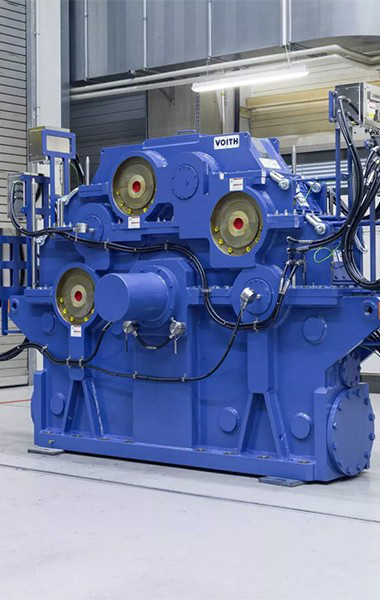

E-mobility pays off
in an electrified market
There’s no getting round the transport revolution

They concluded that measures like replacing combustion engines with electrical drive systems would pay off even in the short term, because the population would be healthier and crop yields higher. According to the study, all investments in climate change mitigation could pay for themselves five to twenty-five times over by as early as 2030 if the calculation factored in consequential damage due to global warming.
Due to events like intense rainfall, droughts, forest fires and much more besides, climate change creates a cost burden for society as a whole that must be factored into the calculation, according to the researchers. For example, burning fossil fuels causes extra costs for the health system as well as crop failures.


Investments pay off in ten to fifteen years
An EU carbon emission standard also requires truck operators to have reduced the CO2 emissions of their entire fleet by 30 percent compared to their 2019 levels by 2030. This will not be possible without electric vehicles. A similar picture is emerging in the NAFTA countries. In Canada, Mexico and the USA, buses and trucks must reduce drastically reduce their CO2 emissions by 2030. The strictest laws are being imposed in the US state of California, where the target for trucks is a 50% reduction by 2030, and as much as 100 percent for buses.
China too is taking climate change seriously and has recognized that the transport sector is an important factor for achieving climate goals. Through its China 7 Emissions Standard, the global economic power aims to reduce its carbon emissions by 80 percent for buses and 30 percent for trucks by the end of 2030.
Worldwide, the costs of consequential climate damage due to torrential rain, drought and forest fires are increasingly being factored into carbon footprints.



Investments in wind and solar:
up 500% since 2005
Even these significant sums are obviously not just money well spent in the service of climate protection but also make financial sense. Because the cost of electricity generated by fossil fuel power plants has long since significantly exceeded that of renewable energy sources. According to market research company Statista, the cost of a kilowatt hour from a gas turbine power plant in Germany in 2021 was between 11.5 and 29 euro cents. For coal-fired power plants this figure stood at 10.4 to 20 euro cents. By comparison, a kilowatt hour from an offshore wind farm cost between 7.2 and 21 euro cents, from a solar system 3.1 to 11 euro cents, and from onshore wind farms as little as 3.9 to 8.3 euro cents.

Renewable energy sources pay off:
(data in euro cents)
Impressive proof:
Renewable energies are climate-friendly and generally cheaper than conventional energy sources.

Since 2005, a total USD 250 billion
has been invested by three countries alone in wind and solar power: China (USD 135 billion), the USA (USD 85 billion) and Germany (USD 29 billion).
Energy yield from offshore wind farms higher than from onshore facilities

Up to three times the output at sea
Schafferhofer predicts that offshore wind farms will play “an essential role in the future global energy supply”, not just because of their high turbine capacities in combination with favorable and consistent wind conditions. In fact, offshore wind farms are far from reaching their full capacity. Because currently, they are still firmly anchored to the sea floor as “monopiles” or “tripods”. Just recently, 15 GW of floating capacity off the coast of Scotland was awarded to a consortium of bidders for the world’s largest tender for a floating wind farm to date.
The future of “floated” windpower
The number of floating projects is increasing worldwide: Japan, South Korea, China and Norway all have projects in the pipeline. And by 2040, the USA aims to generate a total of 10,000 MW of wind energy using this method off the Californian coast.



H2 as key to decarbonization

The study “Hydrogen on the Horizon” by auditing firm PwC Germany in collaboration with the World Energy Council (WEC) and the Electric Power Research Institute (EPRI) estimates worldwide demand for hydrogen to be up to 600 million metric tons per year by 2050. Currently it stands at around 76 million metric tons. Numerous countries, including Australia, Chile, Germany, France, Japan, Canada, the Netherlands, Norway, Portugal, Spain, South Korea and Hungary have already published a national hydrogen strategy. The EU and China also have hydrogen strategies in place.
Offshore wind power offers substantial growth potential
Demand for hydrogen sharply increasing worldwide


Implementation of hydrogen strategies: International examples.
China: Extensive investments in hydrogen infrastructure

In China, 6,000 vehicles are already operating with hydrogen fuel cells, equivalent to “12 percent of the global total”, says Liu Yafang from China’s National Energy Administration (NEA). The country wants to use hydrogen particularly to power buses and heavy-duty trucks. China is also investing in hydrogen infrastructure. In April 2022, China’s official news agency Xinhua announced the construction of more than 250 hydrogen refueling stations. Accordingly, projects are also being developed to produce hydrogen from renewable energies and reduce costs for the water electrolysis process.
EU: 40,000 km hydrogen piping network required by 2040

In Europe too, there’s plenty going on when it comes to hydrogen. Germany, for example, is currently leading the way worldwide with 92 hydrogen refueling stations. By 2030, the operating company H2 Mobility aims to expand this network to 300, more than 200 of which will be large-scale facilities for fueling trucks and buses.
But this will only be possible with a functioning hydrogen pipeline network. To ensure supply, an alliance of 22 European gas network operators from the EU, the UK and Switzerland has launched the “European Hydrogen Backbone” initiative (EHB). It is based on the EU hydrogen strategy, according to which a hydrogen pipeline network covering around 40,000 kilometers across Europe should be in place by 2040.
India: H2 exports to the value of USD 500 billion planned

The competition to produce and transport low-cost hydrogen has also reached India. According to the Reliance Group, the most populous country in the world aims to generate USD 500 billion over the next two decades by exporting green hydrogen. The government has declared that India aims to be one of the world’s largest producers of green hydrogen.
Saudi Arabia: New city to be the center of the hydrogen industry

With its “Vision 2030”, Saudi Arabia has presented an ambitious plan. By 2030, photovoltaic plants with 40 GW as well as wind power plants with 16 GW and solar thermal plants with 2.7 GW are to be connected to the grid or produce green hydrogen.
With its megacity Neom, the traditional oil-producing country is also building what is set to become the global center for the hydrogen industry. In collaboration with companies from the USA and Germany, this will be the site for the world’s largest electrolyzer to split water into H2 and oxygen.
Norway: New production facility for 6 t green hydrogen per day

Oil- and gas producing country Norway already generates 98 percent of its electricity from renewable sources – and continues to set itself ambitious goals. By 2030, the country aims to reduce its carbon emissions by 55 percent compared to 1990 levels. Even cruise ships and ferries will have to be emission-free if they want to sail the fjords of the UNESCO world heritage site. The first hydrogen-powered vessels have already set sail.






























